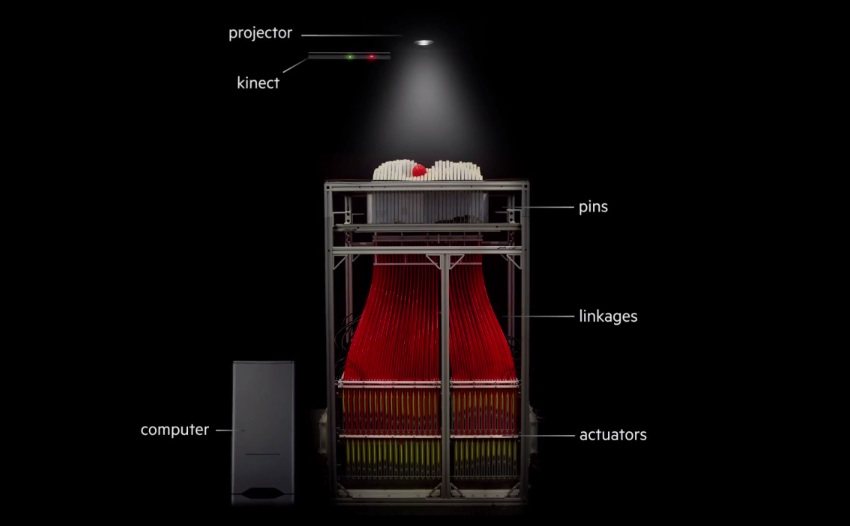What the Tech?: This MIT Invention Shape-shifts By Replicating Hand Movements
Researchers at MIT are at it again, continuing to push the boundaries of physical space with projects that people at one time could have only imagined in Science Fiction.
The latest invention, built by students from the Tangible Media Group in the MIT Media Lab, is called inFORM, a computer-operated device that manipulates actuators and linkages to move a set of pins, allowing it to change shape 3-dimensionally, as if it were moving on its own.
According to the Tangible Media Group’s website, where a video shows off inFORM’s capabilities, the system is a “Dynamic Shape Display that can render 3D content physically, so users can interact with digital information in a tangible way.”
In simpler terms, inFORM can easily connect with the physical world around it, moving objects on a table’s surface with the swipe of a hand, and even mimic the hand’s shape. The concept uses an overhead depth camera to track a users movements, or other 3D objects placed underneath it, which then triggers the pins on the board to move independently in real-time.
Researchers said the system has the capability of allowing someone on the other end of a video conference call to have a “strong sense of presence and the ability to interact physically at a distance,” almost as if they were physically there.
Created by Daniel Leithinger and Sean Follmer with the guidance of engineers, software developers, and Professor Hiroshi Ishii, inFORM users can highlight portions of the pin-board—which is reminiscent of the Pin Art toy from the ’90s—and raise them up without actually touching them, which could be a breakthrough for the architecture sector.
“InFORM would allow 3D modelers and designers to prototype their 3D designs physically without 3D printing,” the inventors explain.
The image below, from a video created by members of the lab, explains how the device functions:


